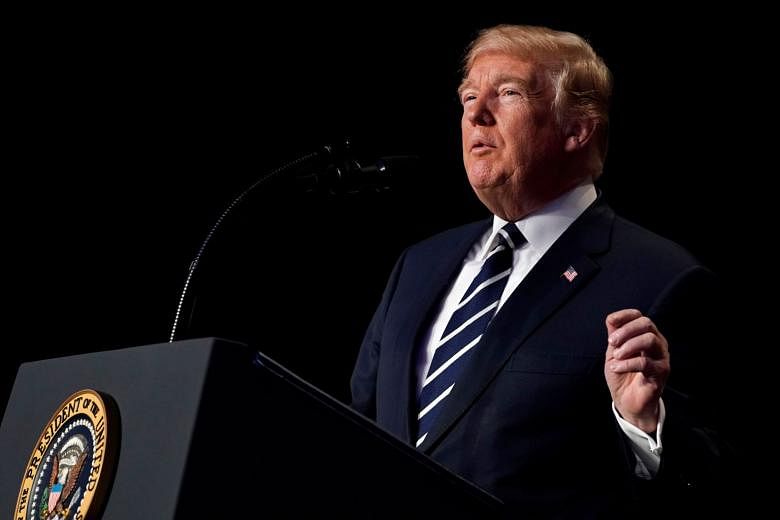WASHINGTON - US President Donald Trump on Monday (Feb 12) rolled out a long awaited US$1.5 trillion (S$2 trillion) plan to repair and rebuild the nation's infrastructure, including highways, bridges, airports, seaports, railroads and water systems, and extend broadband Internet access.
The plan flips the usual financial model. Instead of the federal government bearing most of the cost, it shifts the burden to states and local governments.
The federal government would put up US$200 billion in seed money and it is hoped that this will spur state, local, and private investment to pick up the rest of the bill.
Besides stimulating US$1.3 trillion in new investment, the Trump plan also aims to remove bureaucratic roadblocks to projects and invest in rural infrastructure.
The United States has been under investing in infrastructure for years, leading to growing disrepair in critical areas such as dams, bridges, sewage and drinking water. Almost 40 per cent of the more than 600,000 bridges around the country are at least 50 years old, and 9.1 per cent of them were rated structurally deficient in 2016. These include New York's iconic Brooklyn Bridge.
There are an estimated 240,000 water main breaks per year in the US, wasting more than 7.5 trillion litres of treated drinking water, according to Ms Shelley Poticha, director of urban solutions at the Natural Resources Defence Council.
The plan to rebuild infrastructure is one of Mr Trump's signature pledges, and over the next few weeks he is expected to travel widely to drum up public support before tough negotiations with Congress to get it through.
Opinion polls show that the public prefers local investment in projects that benefit them rather than have to pay taxes to Washington and wait for the federal government to invest in a process that is hampered by the Capitol Hill bureaucracy that has often been a target of the President.
"We built the Empire State Building in just one year," Mr Trump said in his State of the Union address last month. "Isn't it a disgrace that it can now take 10 years just to get a minor permit approved for the building of a simple road?"
While on the face of it a bipartisan issue, the Trump proposal will still see heated debate in Congress as worries mount over the federal deficit, and what implications the plan would have for state taxes - tolls and user fees for instance - to recover costs. There are also concerns that shortening the approvals process will mean short-circuiting environmental regulations.
Senate Democratic minority leader Chuck Schumer at an event in Washington acknowledged that the government had "shortchanged" the nation's infrastructure over the past few years but said he was worried that, in the absence of federal funding, the private sector would have too much latitude to raise user fees.
Senior administration officials briefing reporters ahead of the rollout did not give details beyond saying the federal money would come "out of savings from other areas of the federal budget".
Reports say fiscal hawks, even within Republican ranks, are likely to raise questions about the plan which comes so soon after tax and congressional spending deals that are expected to explode the deficit.
Businesses, however, appeared to welcome the Trump move, with Mr Jay Timmons, president of the National Association of Manufacturers, telling the Associated Press the President was providing the leadership the US desperately needed to "reclaim our rightful place as global leader on true 21st-century infrastructure".
But Ms Poticha called it an "unacceptable corporate giveaway".
The White House strategy, according to Bloomberg News, was to give Congress a set of principles, much as the administration did for the tax overhaul last year, and allow the details - including how to pay for it - to be worked out with lawmakers.
There are at least six committees in the House and five in the Senate that will consider elements of the plan, White House officials were quoted as saying.


